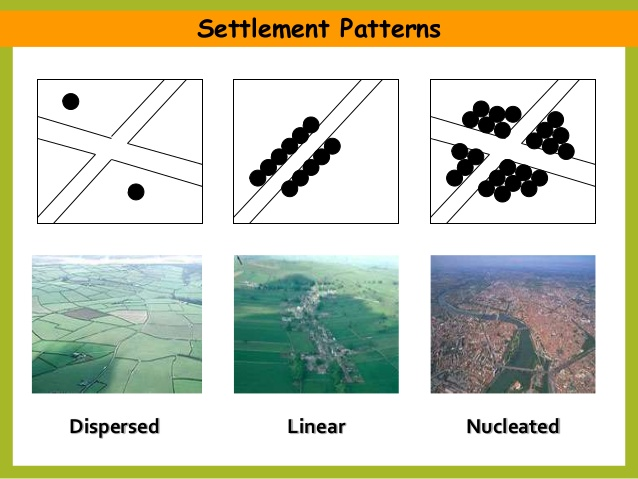Welcome to chapter 12!
Introduction:
In this chapter we will attempt to understand how services and settlements are linked to one another, what the differences in service areas are, and how these form an economic base for the beginning of urbanization, a topic that will be discussed in more depth in Chapter 13.
Services:
Consumer Services: We are all familiar with consumer services. These are the drive-in dinners, hotels, grocery stores, and wholesale mega-stores that litter the landscape. Consumer services provide services to individuals who are willing and able to pay for that particular service.
Business Services: One could think of these as services that help other businesses with activities that help facilitate trade. These including trucking companies, consultants, lawyers, banking institutions, and lobbying firms. Individuals may or may not aware of these in their cities.
Public Services: These are the most basic functions of government, the protection and security of individuals and businesses. Police, fire, and EMS are the main public services.
Central Place Theory
In order to fully understand how settlements are created and distributed, one must first have a general understanding of the following terms:
- Threshold of a Service- The threshold is the least amount of people necessary to sustain a service.
- Range of a Service- A range can be seen as the other side to threshold. It is the maximum distances that individuals are willing to travel in order to use a service.
Working together these two things illustrate the growth of interior and surrounding areas of a settlement.
Also, these two make up what we call Market Area.
The gathering of services together form different levels of market areas: hamlet, village, town, and city.
The organization of cities and towns based on population size, therefore market size, can been seen in two different ways.
Rank-size Distribution- this leveling of cities is seen with the second largest city is nearly half the size of the largest city in a country. This follows for the fourth largest city will be appox. one quarter the size as the largest.
Primate City- If a country's largest city is more than twice the size of the next largest city, the largest will be called a primate city.
Central place theory is a market area that attracts people for the surrounding areas and serves as a center where goods, services, and ideas are exchanged. There exist in each of these areas both larger and smaller central places. The photo below shows how this idea would play out in a perfect, flat, world.
Global Cities:
A global city is a center of information were one will find a concentration of business services primarily banking, but will also include lawyers, accounting firms, advertising, and heavy populations located in the urbanized sectors.


Economic base for each settlement differs, and is defined by the primary industry that is primarily exported to consumers outside the community. Services and industries that are used for individuals inside the community are called Nonbasic industries.
Many cities in the United States have developed a specialization of different services based on their primary industry. Some of the best examples of these are the rust belt, Silicon Valley, and New York City. Other examples would include places that house major health research hospitals and medical technologies (Texas Medical Center has made Houston, TX one of these).
As you could imagine, as these cities’ specializations continue to grow the will create a distinct distribution of talent where in individuals tend to be attracted to cities in their field.
Rural settlements can as display themselves in unique ways that largely depends on the geographic area and culture.
Clusted Rural Settlements were found in New England during the colony period until the beginning of industrial era. Here people lived close to each other and fields surrounded the houses.
Dispersed Rural Settlements is how much of the Mid-West has developed with farmers living generally isolated from one another.
Below is a good example of what each of these models looks like:

